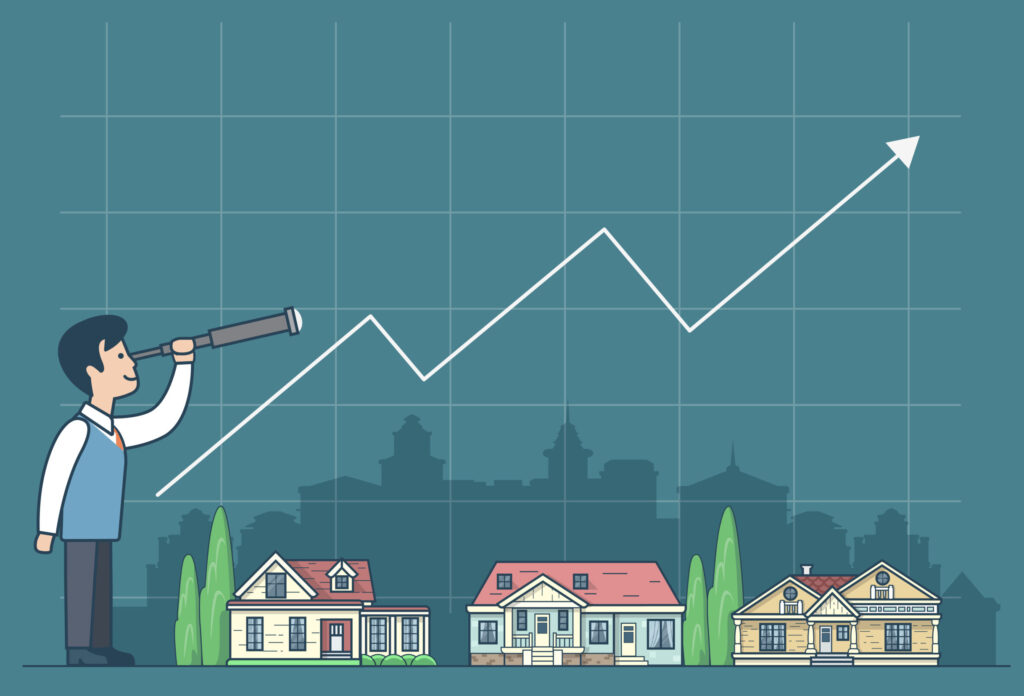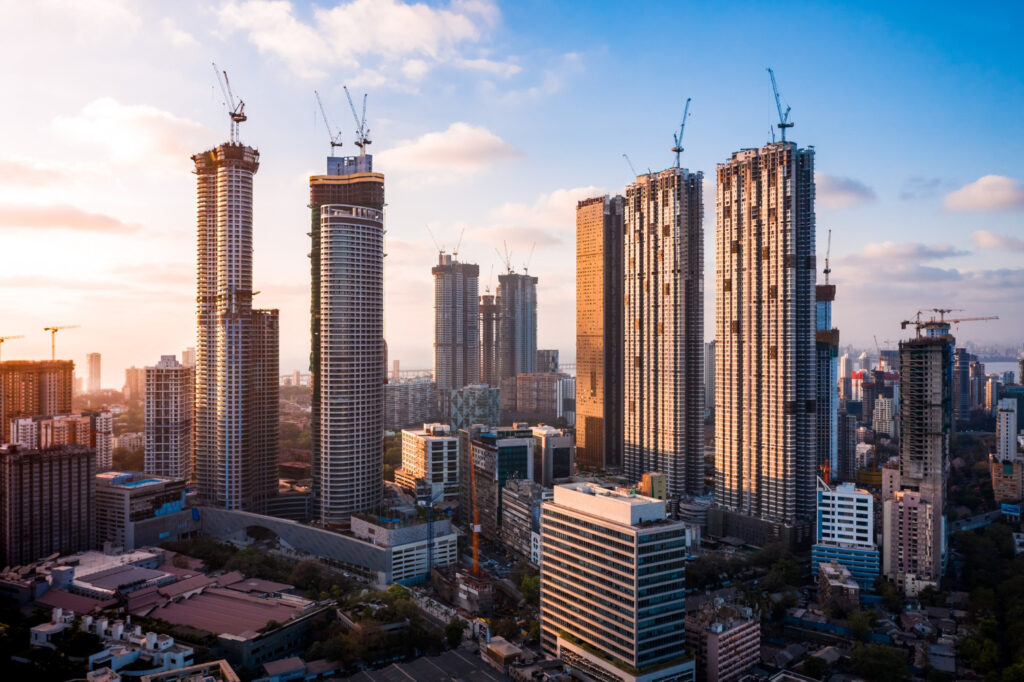Every locality has its own story—driven by employment hubs, infrastructure projects, demographic shifts, and policy changes. By tracking local trends, you can:
- Time your investment for maximum gains or minimal losses. A neighbourhood entering a growth phase may offer substantial capital appreciation, while a slowing area might present buying opportunities at discounted rates.
- Negotiate from strength, armed with data on average selling times, price trajectories, and absorption rates.
- Identify emerging hotspots before they become mainstream—whether it’s a new metro corridor in Kolkata or an SEZ-driven boom near Howrah The Times of India.
- Align financing with market cycles: low interest rates can boost affordability during waning demand, while tighter credit may signal a pause in price growth Reuters.

Key Indicators of Local Market Trends
Price Appreciation and House Price Indices
- All‑India HPI: RBI’s quarterly House Price Index rose 3.1% in Q3 FY25—a slowdown from 4.3% in Q2, yet still signalling steady growth The Economic TimesBusiness & Finance News.
- City‑level performance: In the same quarter, Kolkata led with an 8.1% annual rise, while Kanpur barely inched up by 0.1% The Economic Times.
- Alternative indices: National Housing Bank’s RESIDEX and BIS’s real residential property price series (Index Q3 2024: 152.99) offer inflation‑adjusted views FRED.
Inventory Levels and Overhang
- Inventory overhang measures how many months it would take to clear unsold stock at current sales velocity. India’s average dropped to 22 months in Q2 2024 (from 34 months a year ago), with Kolkata among the most liquid markets (16 months overhang) PropTiger.
- Why it matters: High overhang indicates oversupply and potential price corrections; low overhang suggests robust demand and possible further appreciation.
Rental Yields and Vacancy Rates
- Gross rental yield in India averages around 2–4% annually—low by global standards—making buy‑to‑let less lucrative but reflecting strong rental demand in Tier II/III cities PropTiger.
- Rent growth: Rents have risen 15–20% across top eight cities since 2019, underscoring urban housing shortages PropTiger.
- Vacancy concerns: Millions of homes remain vacant due to speculative buying and regulatory hurdles, dampening overall yield PropTiger.

New Launches and Under‑Construction Projects
- Launch volumes: PropTiger reports 4.10 lakh new units sold in 2023—a 33% YoY surge—indicating builders’ confidence PropTigerLinkedIn.
- Supply‑demand balance: In some metro suburbs, new launches outpace absorption, temporarily boosting inventory – a trend to watch when forecasting price movements.
Absorption Rate
- Definition: The percentage of available stock sold over a period (e.g., quarter). A 10% quarterly absorption rate implies roughly a 2.5‑year sell‑out timeline PropTiger.
- Insight: Higher absorption signals strong demand and potential for price escalation; a drop hints at market cooling.
Mortgage and Interest Rate Trends
- Repo rate cuts: RBI reduced its key repo rate to 6.00% in April 2025, down from 6.25% in February, a move expected to lower floating‑rate home‑loan EMIs Reuters.
- Transmission: Banks link floating loans to the repo rate, so rate cuts directly improve buyer affordability Business News Today.
- Implication: Lower borrowing costs often spur buying, boosting both price and absorption rates, especially in the affordable‑housing segment Business News Today.
Data Sources and How to Gather Them
Government and Official Data
- Reserve Bank of India (RBI): Quarterly HPI, monetary policy decisions.
- National Housing Bank (NHB) RESIDEX: State‑ and city‑level indices of existing and under‑construction properties.
- Census & GST data: Ageing population metrics and construction material tax flows can hint at suburban growth.
Real‑Estate Portals
- PropTiger Reports: Quarterly “Real Insight” on sales, launches, inventory PropTiger
- MagicBricks & 99acres: Price trend tools, absorption calculators, and heatmaps.
- Housing.com IRIS Index: Tracks rent vs. buy sentiment.
Local Brokers and Builders’ Associations
- Credai chapters: Insider data on permitted projects and upcoming schemes.
- Estate agents: Monthly “pulse checks” on visitor inquiries and offer/ask spreads.
Site Visits and On‑Ground Surveys
- Walk neighbourhoods: Note new project hoardings, construction speed, and renter vs. owner occupancy.
- Talk to residents: Gauge sentiment on affordability, infrastructure, and quality of life.

How to Know Any Market Trend: Practical Steps
- Define Your Geographic Scope
Decide whether to analyse a micro‑market (e.g., New Town, Kolkata) or a broader zone (e.g., North Kolkata).
- Set Your Time Frame
Compare YoY and QoQ metrics to distinguish between seasonal fluctuations and sustained trends.
- Collect Data and Track Regularly
Maintain a spreadsheet of:
- HPI readings (RBI, RESIDEX)
- Inventory overhang (PropTiger reports)
- Rent levels (IRIS index, rental portals)
- Repo rate changes (RBI press releases)
- Use Simple Tools for Analysis
Chart price vs. volume correlations in Excel or Google Sheets. Visualise rolling averages to smooth out noise.
- Interpret Leading vs. Lagging Indicators
- Leading: New launches, policy announcements, infrastructure projects.
- Lagging: Price changes, rent adjustments, inventory depletion.
Understanding If Your Local Market Is Growing
Comparing Year‑on‑Year Price Changes
A neighbourhood that outpaces the national HPI (3.1% YoY in Q3 FY25) is likely in a growth phase The Economic Times.
New Infrastructure and Government Policies
Projects like the Joka‑Esplanade and East‑West Metro extensions have lifted property values by up to 10–15% in Howrah and southern Kolkata belts The Times of India.
Migration Patterns and Demographics
Inward migration from rural Bengal and NE states into Kolkata suburbs boosts rental demand and occupancy rates; check local registrar data for building permits.
Case Study: West Bengal Metro Corridors
- Joka‑Majerhat line: 8–12% uptick in prices along stations like Taratala and Behala Srijan Realty.
- Howrah Maidan: 10–15% forecasted appreciation over 12 months, signalling early‑mover advantage The Times of India.
Real‑Life Examples Across India
- Bengaluru IT Corridor: Suburbs along Outer Ring Road saw 12% YoY price growth due to tech‑park expansions LinkedIn.
- Mumbai MMR: Inventory overhang ~54% of unsold stock despite strong absorption in Navi Mumbai PropTiger.
- Kolkata Peripheral Townships: New Town and Rajarhat has become a magnet for millennials, with rental yields of ~2.5% and price CAGR above 8% Srijan Realty.
Conclusion and Takeaways
Understanding housing trends in your local market is no longer optional—it’s essential for making informed, profitable decisions. By tracking price indices, inventory dynamics, rental yields, and mortgage rates—and by leveraging both official data (RBI, NHB) and leading portal insights (PropTiger, MagicBricks)—you’ll stay ahead of the curve. Remember to define your geography, set clear time frames, and distinguish leading from lagging indicators. Whether you’re eyeing a suburban plot in Kolkata’s New Town or an apartment along Howrah’s East‑West Metro, these tools will help you answer key questions like “How to know any market trend?” and “Is my local real estate market growing?”
Ready to explore deeper? Share your local market queries in the comments or reach out for a personalised analysis on your neighbourhood!
